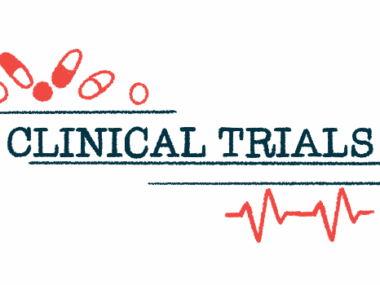New ANX1502 tablet surpasses targeted blood levels in CAD trial
Annexon plans to provide update on experimental therapy later this year
Written by |

A new tablet formulation of Annexon Biosciences’ experimental therapy ANX1502 resulted in therapy levels in the blood that surpassed those expected to be effective in fasting participants with cold agglutinin disease (CAD).
These results from a proof-of-concept study reflect a promising pharmacokinetic profile, which describes how the medication moves into, through, and out of the body. Previous clinical trial data showed ANX1502 reduced clinical and molecular markers of CAD.
“We are optimistic as the exposure demonstrated thus far has exceeded our target threshold in patients without concomitant food intake,” Douglas Love, president and CEO of Annexon, said in a company press release. “We are confirming these findings in fasted patients to achieve proof-of-concept (POC) for this first-in-kind oral program, and we anticipate providing an update later this year.”
Annexon plans to use several findings of this trial to guide further ANX1502 development for CAD and other autoimmune diseases that share some underlying immune processes.
ANX1502 targets key complement protein
CAD is caused by the immune system mistakenly attacking red blood cells after exposure to low temperatures. Self-reactive antibodies called cold agglutinins are at the root of this process, as they activate components in the immune complement cascade that ultimately mark the cells for destruction.
This destruction process, called hemolysis, leads to deficient levels of oxygen in the blood and several CAD symptoms, including fatigue, weakness, and pale skin.
ANX1502 was designed to block full activation of the complement pathway by targeting C1s, a complement protein. Typically, C1s works with another complement protein called C1q to trigger the cascading immune response. Annexon expects that by suppressing C1s, the oral therapy will mitigate impacts on red blood cells and ease CAD symptoms.
In a Phase 1 clinical trial (NCT05521269), a liquid formulation of ANX1502 was found to be safe and to reach expected concentrations in the blood of healthy volunteers. This was true whether participants received a single dose (25 mg to 1,050 mg) or multiple doses (200 mg to 525 mg twice daily for 14 days).
Following these positive initial findings, Annexon decided to conduct a proof-of-concept trial in people with CAD using a new formulation of the therapy, which the company believes may improve tolerability and patient experience.
The new formulation comprises enteric-coated tablets, which prevent the medication from being released until it reaches the small intestine.
Company explores therapy’s potential application to other autoimmune diseases
For the first three ANX1502-treated participants in this study, the new formulation appeared to effectively block the complement cascade and to reduce hemolysis, according to clinical signs and molecular markers.
Newly announced data showed that when CAD participants took ANX1502 while in a fasted state, blood concentrations of the medication exceeded target levels. This suggests the dosage has the pharmacokinetic properties needed to produce the expected clinical effects, according to Annexon.
We are well positioned to achieve our mission of helping millions of people with devastating complement-mediated diseases live their best lives by the consistent validation generated by our innovative C1 platform across multiple potential best-in-class therapeutics.
Additional analyses of pharmacokinetics and pharmacodynamics, or the therapy’s effects on the body, in relation to food intake are ongoing, as are measurements of blood levels of complement and hemolysis markers.
Results from the proof-of-concept study may inform the company’s efforts to apply ANX1502 to other autoimmune diseases driven by excessive activation of the complement cascade, “leveraging oral delivery to potentially disrupt biologics-treated indications,” the release stated.
“We are well positioned to achieve our mission of helping millions of people with devastating complement-mediated diseases live their best lives by the consistent validation generated by our innovative C1 platform across multiple potential best-in-class therapeutics,” Love said.






